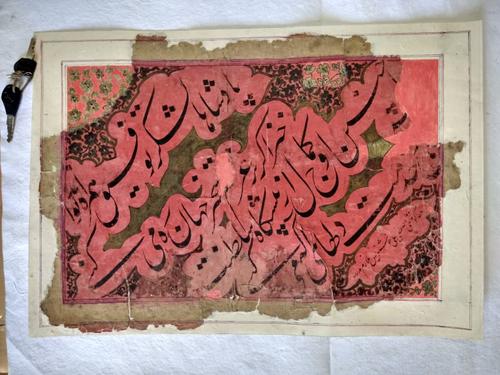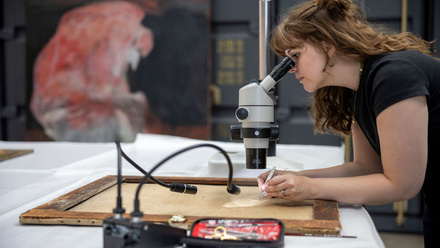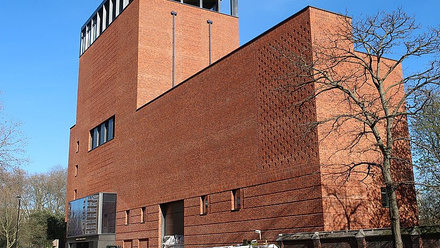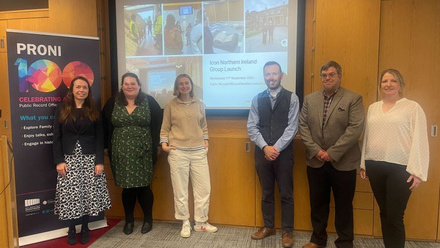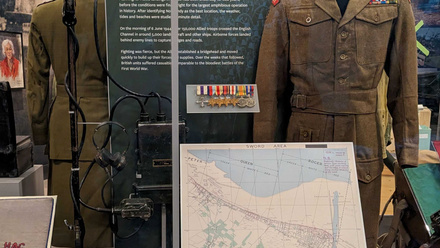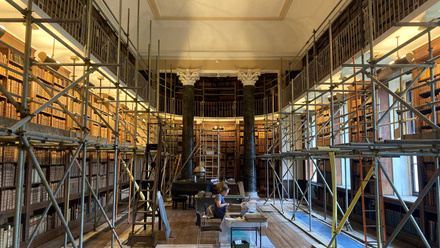And remember, if you would like to get involved and share your project with the Icon community then please fill out this form and send it back to us.
Imran Ali Buth - Illuminated Calligraphy Manuscript
We received a single-folio illuminated calligraphy manuscript, dated to the 19th century, from a private owner for conservation. The calligraphy was done by a famous native elegy writer of that period, named Munshi Mustafa Ali. The text is beautifully adorned with floral motifs, filling the spaces around the text and giving an attractive look to the Persian couplet written in the famous Nastaliq calligraphy style of writing.
The condition of the folio was extremely deteriorated; it was badly cockled with layers of dust present on the surface, with multiple stains therein. The top-right portion of the folio was torn apart and detached from the rest, but fortunately it survived. The top-left portion was missing, with several holes, tears, multiple crease marks and fold marks located therein. The edges of the folio were found badly wrinkled and damaged.
It was a challenging task to conserve the manuscript because the ink, used in the text as well as in the floral motifs, was found to be soluble in water which made the task more delicate. However, the task was carried out successfully without inflicting any sort of damage to the originality of the manuscript. The material we used, like paper for back-side lining and tear mending, was handmade acid-free and harmless, with the adhesive prepared of gluten-free starch.
The following images detail the condition of the manuscript and the conservation treatment processes involved.
The condition of the single-folio illuminated calligraphy manuscript before conservation (Figure 1).
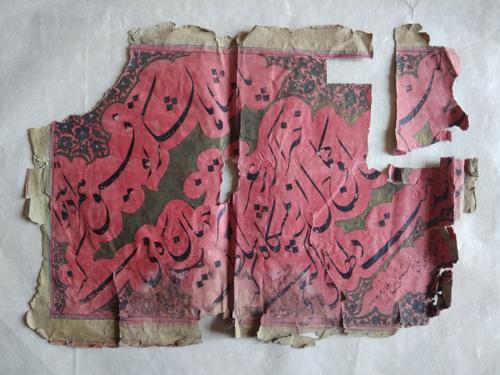
An ink test was carried out initially to check the solubility of the inks used in the text as well as in the floral motifs. The inks used in the text, as well as in the floral motifs, were found to be soluble in water which gave an indication about the sensitivity and delicacy of the task (Figure 2).
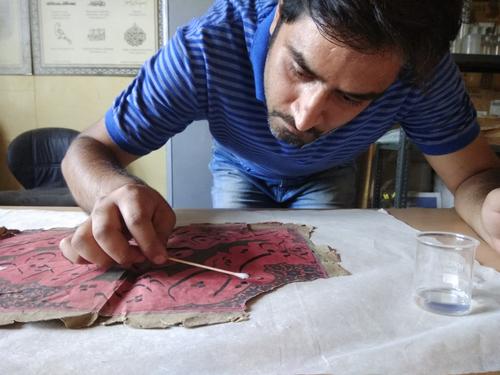
Adhesive was prepared of gluten free starch for back-side lining, tear-mending, hole-mending, and patching over lost portions (Figure 3).
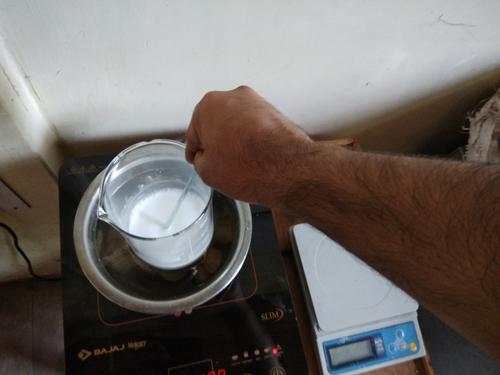
After back-side lining of the folio, tears and holes were mended with the help of handmade acid-free paper (Figure 4).
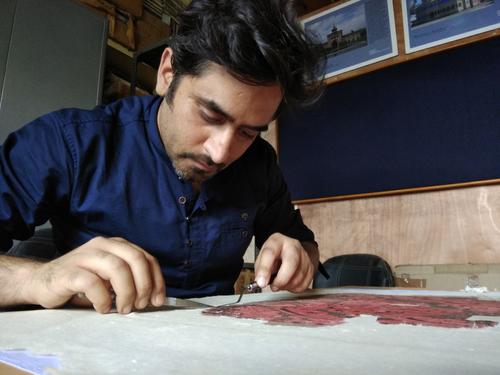
Recreating the text and floral motifs on the lost portions allowed us to get a lead as to the text and design itself. Research also revealed an image of the same couplet written in a similar style from the digital archive of Mr. Hakim Sameer Hamdani (Figure 5).
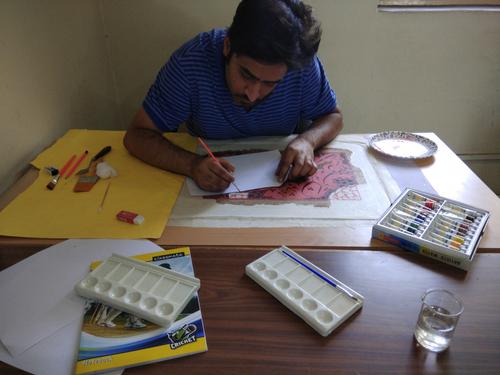
The condition of the single-folio illuminated calligraphy manuscript after conservation (Figure 6).
